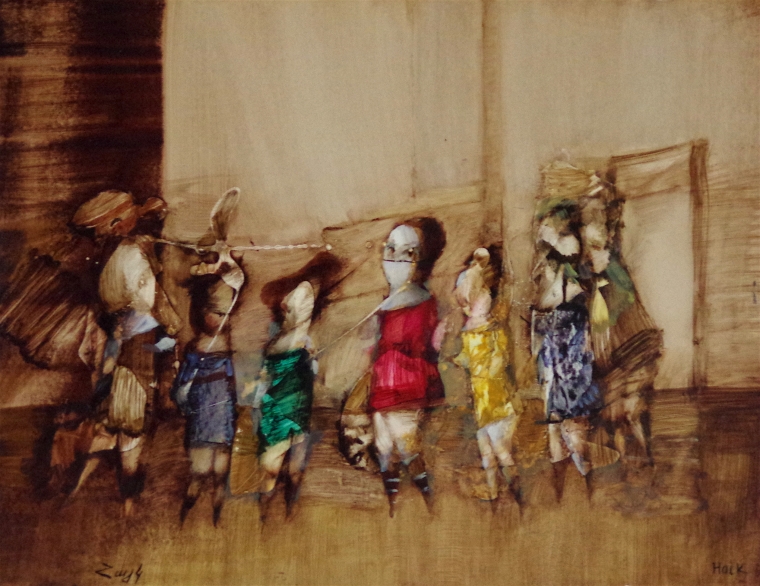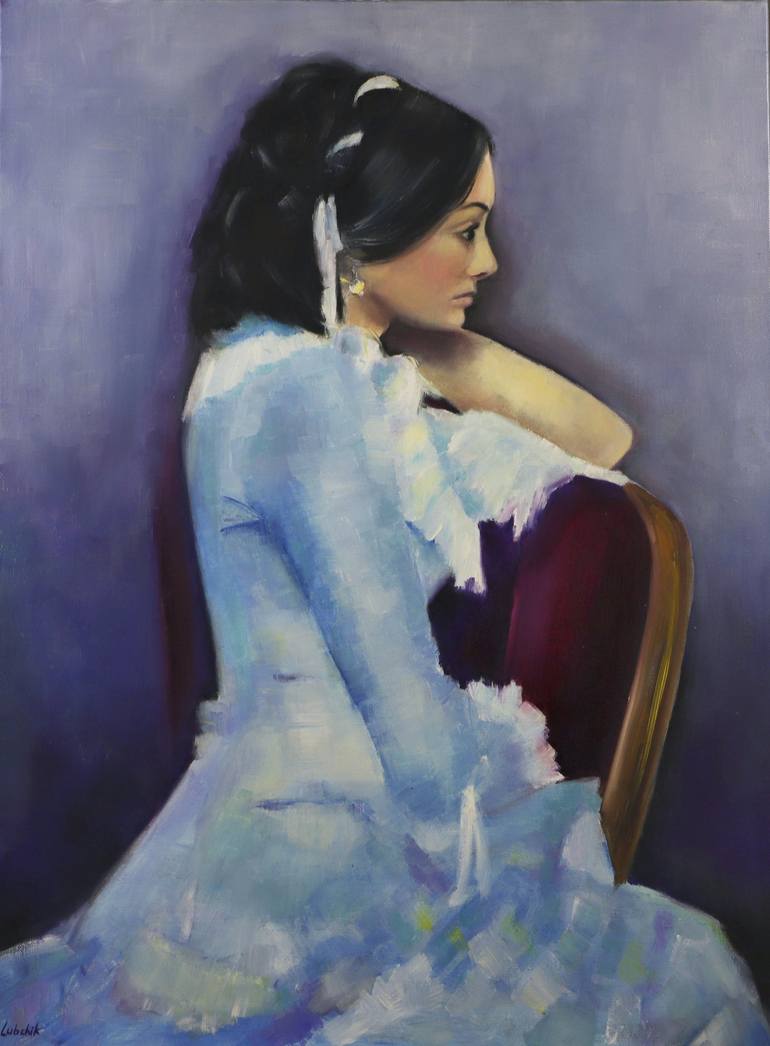The Effect of Figurative Oil Painting on Modern Art and Culture
The Effect of Figurative Oil Painting on Modern Art and Culture
Blog Article
The Evolution of Metaphorical Oil Paint: Recognizing Its Historical Importance and Modern Interpretations
The advancement of metaphorical oil paint offers as a compelling lens through which to examine the interplay in between imaginative expression and historical context. Contemporary musicians, attracting from this rich heritage, are currently reinterpreting the human number in ways that test standard stories.
Beginnings of Metaphorical Oil Painting
The beginnings of metaphorical oil painting can be traced back to the early Renaissance in Europe, especially in the 15th century. This duration marked a considerable departure from the level depictions and inflexible types characteristic of medieval art. Musicians started to explore naturalism, emphasizing the human figure and its psychological expression. The advancement of oil paint enabled higher depth of color and detail, improving the realism and vibrancy of their job.

In this transformative age, numbers were frequently portrayed within contextually abundant atmospheres, showcasing not just their physical attributes yet likewise their emotional states. Pioneers such as Jan van Eyck and Titian used the tool's flexibility, using layering strategies to attain brightness and structure. This development assisted in the portrayal of complex materials and the subtleties of skin tones, adding to the growth of portrait and narrative scenes.
Furthermore, the Renaissance focus on humanism fostered an appreciation for individualism, which subsequently influenced artists to create more vibrant and relatable numbers - figurative oil painting. As a result, metaphorical oil paint arised as a powerful automobile for narration and psychological involvement, laying the foundation for future imaginative motions and styles
Trick Historical Activities
Significant historic activities have actually formed the development of figurative oil paint, each contributing distinct approaches and strategies that increased the medium's possibilities. The Renaissance noted a zero hour, highlighting realistic look and the human form, with artists like Leonardo da Vinci and Michelangelo pushing the borders of anatomical accuracy and viewpoint. Following this, the Baroque age brought significant contrasts of light and darkness, exhibited by Caravaggio, that instilled religious themes with extreme emotionality.
The 19th century presented Romanticism and Realism, where musicians such as Delacroix and Courbet tested timeless perfects, focusing on private expression and everyday life. The development of Impressionism even more reinvented the tool by stressing the effects of light and color, bring about a departure from traditional representation.
In the very early 20th century, movements like Expressionism and Cubism redefined metaphorical painting with abstraction and the expedition of emotional depth. Each of these movements not just mirrored the social modifications of their times however likewise laid the groundwork for contemporary analyses. The interaction between these historic movements has actually created a rich tapestry of philosophies and designs, affecting contemporary musicians in their pursuit of capturing the human experience on canvas.
Strategies and Products Advancement

Throughout the Baroque period, techniques such as chiaroscuro and sfumato arised, improving the psychological vibration of figurative compositions. Musicians started to explore glazes and impasto, controling texture and luminosity. By the 19th century, innovations like the usage of pre-mixed paints in tubes reinvented availability, allowing artists to repaint en plein air and record the fleeting results of light.
The you can find out more 20th century experienced the introduction of artificial pigments and tools, which increased the combination and modified the consistency of oil paints. The exploration of brand-new application methods, such as scheme knives and brushes of varying rigidity, further diversified creative expression. Jointly, these developments mirror the evolving partnership in between products, strategies, and the creative vision inherent in figurative oil paint.

Contemporary Interpretations
Contemporary analyses of figurative oil painting reflect Clicking Here a dynamic dialogue in between practice and advancement, where artists challenge established norms and explore diverse motifs. This advancement manifests in various means, as contemporary musicians blend classical strategies with modern-day ideas, typically resolving social, political, and individual narratives.
Many professionals draw ideas from historical works, yet they instill their pieces with contemporary perspectives, utilizing the human form as a car for commentary on society, identification, and sex. Artists significantly experiment with abstraction, distortion, and combined media, which permits a wider analysis of the number and its context.
In addition, the use of vibrant shade combinations and unconventional make-ups usually serves to interrupt conventional viewing experiences, provoking important involvement from audiences. This shift in focus expands past appearances; it reflects a growing awareness of the intricacies of human experience in an interconnected world.
As figurative oil painting remains to evolve, it stays a crucial medium for discovering the nuances of contemporary life, symbolizing both a regard for heritage and a dedication to dynamic idea. The outcome is an abundant tapestry of expression that resonates with the complexities of the modern-day human problem.
Effect on Modern Art
The effect of metaphorical oil paint on modern-day art is profound, as it has actually consistently motivated a myriad of creative activities and techniques throughout the 20th and 21st centuries. From Expressionism to Surrealism and past, the expedition of the human number has continued to be a main style, enabling musicians to share intricate feelings and stories. This focus on figurative representation has caused a re-examination of conventional strategies, leading to cutting-edge approaches that blend realistic look with abstraction.
Additionally, modern artists have actually embraced metaphorical oil paint as a means to address political and social concerns, utilizing the tool to challenge understandings of sex, culture, and identification. The resurgence of rate of interest in metaphorical work in recent years reflects a longing for connection in an increasingly electronic world, where human experience and feeling are critical.
Additionally, the dialogue in between figurative oil paint and modern-day art is apparent in the works of artists such as Kehinde Wiley and Jenny Saville, that attract on historical recommendations while infusing their items with modern importance. Ultimately, figurative oil painting continues to form and redefine contemporary imaginative expression, emphasizing find out here its long-lasting relevance in the art world.
Conclusion
The evolution of metaphorical oil painting emphasizes its historical significance and adaptability throughout various creative motions. Inevitably, figurative oil painting stays an essential tool for checking out the human experience, reverberating greatly in today's digital landscape.
The development of metaphorical oil painting serves as an engaging lens through which to check out the interplay in between imaginative expression and historic context.Significant historic motions have actually shaped the development of metaphorical oil paint, each contributing distinct viewpoints and techniques that broadened the medium's opportunities.As historical motions formed the trajectory of figurative oil paint, the techniques and products employed by musicians have likewise undergone considerable changes. figurative oil painting.The influence of metaphorical oil painting on modern-day art is extensive, as it has actually constantly influenced a myriad of creative activities and methods throughout the 20th and 21st centuries.The evolution of metaphorical oil painting underscores its historic significance and flexibility throughout various artistic activities
Report this page